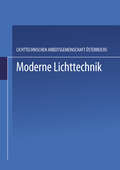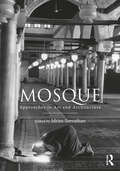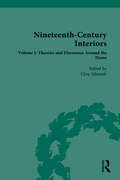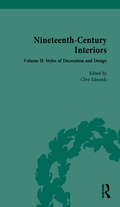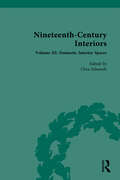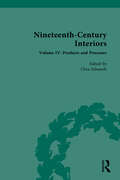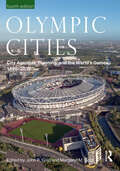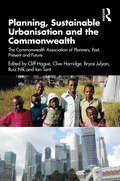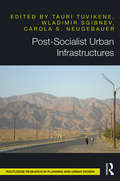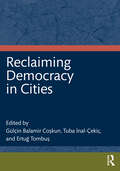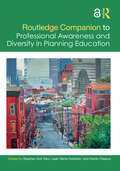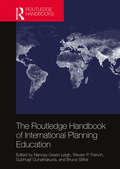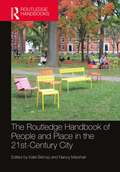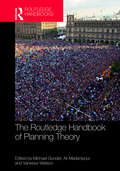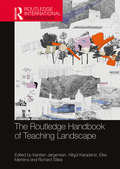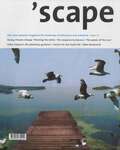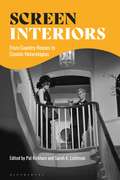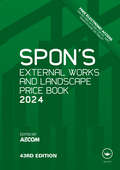- Table View
- List View
Mosque: Approaches to Art and Architecture
Mosque examines the history, culture, evolution and functions of the Muslim house of worship through the prism of its artistic objects and architectural elements. Contributors present a range of elements, from dome to mihrab, to mosque furniture including lamps, prayer rugs and Qur’an stands. In addition, the book draws attention to the importance of mosque heritage through special projects and initiatives that study, preserve and revitalize the traditional arts of the mosque. This unique book brings together prominent architects, art historians, artists, historians and curators to explore innovative approaches towards the study of mosques through the presentation of original research and insights about mosque-related cultural objects. It is essential reading for anyone interested in the art and culture of the Muslim world.
Mushroom (Large Print)
This is an image of an open-cap mushroom in the middle of the page. The mushroom is the fruiting body of a type of fungus. There is a locator dot shown, which will be at the top left of the page when the image is the correct way up. The mushrooms cap is at the top of the image. It is a warm grey in colour. Down the page from the cap, are the mushrooms gills (lamellae), they are represented as lines radiating from the top of the stem (stipe), which is further down the page. The dark brown lamellae produce spores that will grow into new fungi. The stipe extends down the page and at its bottom it would connect to a network of fine root-like hairs through which the organism absorbs its nutrition. These hairs have not been shown on the diagram.
Mushroom (UEB Contracted)
This is an image of an open-cap mushroom in the middle of the page. The mushroom is the fruiting body of a type of fungus. There is a locator dot shown, which will be at the top left of the page when the image is the correct way up. The mushrooms cap is at the top of the image. It is a warm grey in colour. Down the page from the cap, are the mushrooms gills (lamellae), they are represented as lines radiating from the top of the stem (stipe), which is further down the page. The dark brown lamellae produce spores that will grow into new fungi. The stipe extends down the page and at its bottom it would connect to a network of fine root-like hairs through which the organism absorbs its nutrition. These hairs have not been shown on the diagram.
Mushroom (UEB Uncontracted)
This is an image of an open-cap mushroom in the middle of the page. The mushroom is the fruiting body of a type of fungus. There is a locator dot shown, which will be at the top left of the page when the image is the correct way up. The mushrooms cap is at the top of the image. It is a warm grey in colour. Down the page from the cap, are the mushrooms gills (lamellae), they are represented as lines radiating from the top of the stem (stipe), which is further down the page. The dark brown lamellae produce spores that will grow into new fungi. The stipe extends down the page and at its bottom it would connect to a network of fine root-like hairs through which the organism absorbs its nutrition. These hairs have not been shown on the diagram.
Nineteenth-Century Interiors: Volume I: Theories and Discourses Around the Home
This volume of primary source materials documents the nature of the home and the theories and discussions around the concept. It examines the class divisions that become evident with the ostentatious lifestyles of political and society hostesses at the peak, whilst middle-class housing often in suburbia, seemed to have created a separation of home and work, arguably suggesting men and women lived in separate spheres. Working-class interiors, often seen the eyes of middle-class observers, were at the bottom of the hierarchy and often reflected concerns of social inequality and misery. The documents also address the process of purchasing and decorating a home, advice on decoration and home management, the nature of taste and comfort, and the symbolic roles of the home as an anchor in society. Accompanied by extensive editorial commentary, this collection will be of great interest to students and scholars of art history.
Nineteenth-Century Interiors: Volume II: Styles of Decoration and Design
This volume of primary source materials documents the nineteenth-century search for a representative style, and the alternating fashions for interiors that demonstrated the consumerism of the period. Although in some senses every interior is unique so that a style canon may seem to be meaningless, there have been important historical trends or styles that have influenced individual interiors, and these have formed the groundwork from which other styles and tastes have developed and changed. Accompanied by extensive editorial commentary, this collection will be of great interest to students and scholars of art history.
Nineteenth-Century Interiors: Volume III: Domestic Interior Spaces
This volume of primary source materials documents the spatial layouts of the nineteenth century home as they often became more precisely planned with rooms for specific purposes being developed. The styles began to truly reflect the owner’s taste and position. The range is of course vast from single room dwellings to large-scale mansions and numerous variations in-between. Accompanied by extensive editorial commentary, this collection will be of great interest to students and scholars of art history.
Nineteenth-Century Interiors: Volume IV: Products and Processes
This volume of primary source materials documents the essential practical aspects of making a home, decorating it and then furnishing it. The crucial constitutive parts that make up an interior from floor to ceiling are considered here in detail. The role of advice books and articles that attempted to direct homemakers in particular directions are examined, as are the more practical how-to publications that demonstrated the processes of interior decoration. Accompanied by extensive editorial commentary, this collection will be of great interest to students and scholars of art history.
Öffentliche Kunst, Kunst im öffentlichen Raum Niederösterreich, Band 8: / Public Art Lower Austria, Volume 8 (Veröffentlichte Kunst. Kunst im öffentlichen Raum Niederösterreich Public Art Lower Austria #8)
Kunst im öffentlichen Raum in Niederösterreich ist ein einzigartiges Modell, das international höchste Anerkennung findet. Die im ländlichen und kleinstädtischen Raum entstandenen Projekte bedeutender, aber auch junger unbekannter KünstlerInnen setzen sich mit der Landschaft, der Kulturgeschichte und der Architektur auseinander oder entstanden auf der Basis von sozialer und wissenschaftlicher Recherche. Der vorliegende Band dokumentiert die Projekte der Jahre 2004 – 2006. Neben der Projektdokumentation äußern sich Experten unterschiedlichster Bereiche in einer kunstwissenschaftlichen und theoretischen Diskussion zur "Gestaltung von Kreisverkehren", ein Thema brisanter Aktualität in der Gestaltung von Landschaft und Umgebung.
Olympic Cities: City Agendas, Planning, and the World’s Games, 1896 – 2032 (ISSN)
The first edition of Olympic Cities, published in 2007, provided a pioneering overview of the changing relationship between cities and the modern Olympic Games. This substantially revised and much enlarged fourth edition builds on the success of its predecessors. The first of its three parts provides overviews of the urban legacy of the four component Olympic festivals: the Summer Games; Winter Games; Cultural Olympiads; and the Paralympics. The second part comprises systematic surveys of six key aspects of activity involved in staging the Olympics and Paralympics: finance; sustainability; the creation of Olympic Villages; security; urban regeneration; and tourism. The final part consists of ten chronologically arranged portraits of host cities from 1960 to 2032, with complete coverage of the Summer Games of the twenty-first century.As controversy over the growing size and expense of the Olympics, with associated issues of democratic accountability and legacy, continues unabated, this book’s incisive and timely assessment of the Games’ development and the complex agendas that host cities attach to the event will be essential reading for a wide audience. This will include not just urban and sports historians, urban geographers, event managers, and city planners, but also anyone with an interest in the staging of mega-events and concerned with building a better understanding of the relationship between cities, sport, and culture.
Planning, Sustainable Urbanisation and the Commonwealth: The Commonwealth Association of Planners, Past, Present and Future
By 2050, an additional 2.5 billion people will be living in the world’s towns and cities, almost 50% of them in the 56 Commonwealth countries. To a significant extent, the future of the planet hangs on how cities and human settlements are managed. It is in our cities that the emissions creating climate catastrophe are stoked and where change can – and must – make a difference at scale. Food security, water, basic services, migration, shelter, jobs, environment: sustainable urbanisation is about changing direction to strive for a fairer and less environmentally damaging future. This well-illustrated book by authors from around the Commonwealth tells how the Commonwealth Association of Planners across five decades has campaigned to make a difference. It also looks ahead, scoping the urgent, practical action that is now required.
Post-Socialist Urban Infrastructures (OPEN ACCESS)
Post-Socialist Urban Infrastructures critically elaborates on often forgotten, but some of the most essential, aspects of contemporary urban life, namely infrastructures, and links them to a discussion of post-socialist transformation. As the skeletons of cities, infrastructures capture the ways in which urban environments are assembled and urban lives unfold. Focusing on post-socialist cities, marked by neoliberalisation, polarisation and hybridity, this book offers new and enriching perspectives on urban infrastructures by centering on the often marginalised aspects of urban research—transport, green spaces, and water and heating provision. Featuring cases from West and East alike, the book covers examples from Azerbaijan, Bulgaria, Serbia, Croatia, Germany, Russia, Georgia, Lithuania, Poland, the Czech Republic, Tajikistan, and India. It provides original insights into the infrastructural back end of post-socialist cities for scholars, planners and activists interested in urban geography, cultural and social anthropology, and urban studies.
Reclaiming Democracy in Cities
Effective urban governance is essential in responding to the challenges of inequality, migration, public health, housing, security, and climate change. Reclaiming Democracy in Cities frames the city as a political actor in its own right, exploring the city’s potential to develop deliberative and participatory practices which help inform innovative democratic solutions to modern day challenges.Bringing together expertise from an international selection of scholars from various fields, this book begins with three chapters which discuss the theoretical idea of the democratic city and the real-world applicability of such a model. Part II discusses new and innovative democratic practices at the local level and asks in what way these practices help us to rethink democratic politics, institutions, and mechanisms in order to move toward a more egalitarian, pluralist, and inclusive direction. Drawing on the Istanbul municipal elections and the Kurdish municipal experience, Part III focuses on the question of whether cities and local governments can lead to the emergence of strong democratic forces that oppose authoritarian regimes. Finally, Part IV discusses urban solidarity networks and collaborations at both the local level and beyond the nation, questioning whether urban solidarity networks and alliances with civil society or transnational city networks can create alternative ways of thinking about the city as a locus of democracy.This edited volume will appeal to academics, researchers, and advanced students in the fields of urban studies, particularly those with an interest in democratic theory; local democracy; participation and municipalities. It will also be relevant for practitioners of local governments, NGOs, and advocacy groups and activists working for solidarity networks between cities.
Romany caravan (Large Print)
This image shows the side view of a painted Romany caravan. There is a locator dot shown, which will be at the top left of the page when the image is the right way up. At the lower left of the image, four steps lead up to a door at the rear end of the caravan, which is not visible in this image. To the right of the steps at the bottom of the image, two of the caravan's four spoked wheels can be seen with the larger on the left. Above the small wheel on the right is the supporting frame upon which the axle turns. The axle cannot be shown. Above the wheels, decorative columns are shown on the panelling of the caravan, leading up to two windows with open shutters. The painted wooden roof sticks out beyond the body of the caravan at the top of the image, particularly at the back.
Romany caravan (UEB Contracted)
This image shows the side view of a painted Romany caravan. There is a locator dot shown, which will be at the top left of the page when the image is the right way up. At the lower left of the image, four steps lead up to a door at the rear end of the caravan, which is not visible in this image. To the right of the steps at the bottom of the image, two of the caravan's four spoked wheels can be seen with the larger on the left. Above the small wheel on the right is the supporting frame upon which the axle turns. The axle cannot be shown. Above the wheels, decorative columns are shown on the panelling of the caravan, leading up to two windows with open shutters. The painted wooden roof sticks out beyond the body of the caravan at the top of the image, particularly at the back.
Romany caravan (UEB uncontracted)
This image shows the side view of a painted Romany caravan. There is a locator dot shown, which will be at the top left of the page when the image is the right way up. At the lower left of the image, four steps lead up to a door at the rear end of the caravan, which is not visible in this image. To the right of the steps at the bottom of the image, two of the caravan's four spoked wheels can be seen with the larger on the left. Above the small wheel on the right is the supporting frame upon which the axle turns. The axle cannot be shown. Above the wheels, decorative columns are shown on the panelling of the caravan, leading up to two windows with open shutters. The painted wooden roof sticks out beyond the body of the caravan at the top of the image, particularly at the back.
Routledge Companion to Professional Awareness and Diversity in Planning Education
The Routledge Companion to Professional Awareness and Diversity in Planning Education engenders a discourse on how urban planning as a discipline is being made attractive to children and youth as they consider their career preferences. It also provides a discourse around the diversity challenges facing the institutions for training urban planning professionals.This Companion is an impressive collection of initiatives, experiences, and lessons in helping children, youth, and the general public appreciate the importance of, and the diversity challenge confronting, the urban planning profession and education. It comprises empirical, experimental, and case study research on initiatives to address the professional awareness and diversity challenges in urban planning. It has uniquely assembled voices and experiences from countries in Africa, Asia, Europe, and North America. Contributors are educators, practitioners, and activists of urban planning as well as policymakers in their respective countries.This Companion is intended as a resource for urban planning schools and departments, foundations, non-profit organizations, private sector organizations, public institutions, teachers, and alumni, among others to learn and consciously drive efforts to increase planning education awareness among children, youth, and the general public.Chapter 6 of this book is freely available as a downloadable Open Access PDF at http://www.taylorfrancis.com under a Creative Commons Attribution-Non Commercial-No Derivatives (CC-BY-NC-ND) 4.0 license.
The Routledge Handbook of International Planning Education
The Routledge Handbook of International Planning Education is the first comprehensive handbook with a unique focus on planning education. Comparing approaches to the delivery of planning education by three major planning education accreditation bodies in the United States, Australia, and the United Kingdom, and reflecting concerns from other national planning systems, this handbook will help to meet the strong interest and need for understanding how planning education is developed and delivered in different international contexts. The handbook is divided into five major sections, including coverage of general planning knowledge, planning skills, traditional and emerging planning specializations, and pedagogy. An international cohort of contributors covers each subject’s role in educating planners, its theory and methods, key literature contributions, and course design. Higher education’s response to globalization has included growth in planning educational exchanges across international boundaries; The Routledge Handbook of International Planning Education is an essential resource for planners and planning educators, informing the dialogue on the mobility of planners educated under different national schema.
The Routledge Handbook of People and Place in the 21st-Century City
Increasing urbanization and increasing urban density put enormous pressure on the relationships between people and place in cities. Built environment professionals must pay attention to the impact of people–place relationships in small- to large-scale urban initiatives. A small playground in a neighborhood pocket park is an example of a small-scale urban development; a national environmental policy that influences energy sources is an example of a large-scale initiative. All scales of decision-making have implications for the people–place relationships present in cities. This book presents new research in contemporary, interdisciplinary urban challenges, and opportunities, and aims to keep the people–place relationship debate in focus in the policies and practices of built environment professionals and city managers. Most urban planning and design decisions, even those on a small scale, will remain in the urban built form for many decades, conditioning people’s experience of their city. It is important that these decisions are made using the best available knowledge. This book contains an interdisciplinary discussion of contemporary urban movements and issues influencing the relationship between people and place in urban environments around the world which have major implications for both the processes and products of urban planning, design, and management. The main purpose of the book is to consolidate contemporary thinking among experts from a range of disciplines including anthropology, environmental psychology, cultural geography, urban design and planning, architecture and landscape architecture, and the arts, on how to conceptualize and promote healthy people and place relationships in the 21st-century city. Within each of the chapters, the authors focus on their specific areas of expertise which enable readers to understand key issues for urban environments, urban populations, and the links between them.
The Routledge Handbook of Planning Theory
The Routledge Handbook of Planning Theory presents key contemporary themes in planning theory through the views of some of the most innovative thinkers in planning. They introduce and explore their own specialized areas of planning theory, to conceptualize their contemporary positions and to speculate how these positions are likely to evolve and change as new challenges emerge. In a changing and often unpredictable globalized world, planning theory is core to understanding how planning and its practices both function and evolve. As illustrated in this book, planning and its many roles have changed profoundly over the recent decades; so have the theories, both critical and explanatory, about its practices, values and knowledges. In the context of these changes, and to contribute to the development of planning research, this handbook identifies and introduces the cutting edge, and the new emerging trajectories, of contemporary planning theory. The aim is to provide the reader with key insights into not just contemporary planning thought, but potential future directions of both planning theory and planning as a whole. This book is written for an international readership, and includes planning theories that address, or have emerged from, both the global North and parts of the world beyond.
The Routledge Handbook of Teaching Landscape (Routledge International Handbooks)
Written in collaboration with the European Council of Landscape Architecture Schools (ECLAS) and LE: NOTRE, The Routledge Handbook of Teaching Landscape provides a wide-ranging overview of teaching landscape subjects, from geology to landscape design, reflecting different perspectives and practices at university-level landscape curricula. Focusing on the didactics of landscape education, this fully illustrated handbook presents and discusses pedagogy, teaching traditions, experimental teaching methods and new teaching principles. The book is structured into three parts: reading the landscape, representing the landscape and transforming the landscape. Contributions from leading experts in the field, such as Simon Bell, Marc Treib, Jörg Rekittke and Susan Herrington, explore landscape analysis, history and theory, design visualisation, creativity and art, planning studio teaching, field trips and site engineering. Aimed at engaging academic researchers and instructors across disciplines such as landscape architecture, geography, ecology, planning and archaeology, this book is a must-have guide to landscape pedagogy as it stands today.
'scape: The International Magazine of Landscape Architecture and Urbanism (Scape #2/07)
The planning parameters of city planning and landscape architecture are changing as a result of global warming. 'scape 4 presents the most intelligent and exciting designs, and discusses the various possibilities planners have, for working with the changing climate. Designing without water: heat and dryness demand new visions; resource scarcity calls for rethinking. Delta regions are the most densely populated areas in the world. Precisely in these regions the water is rising. In the Netherlands a number of studies and initiatives are investigating what solutions are possible and desirable. Arctic cities are no longer remote, whether economically or in terms of culture or climate. What were once extreme situations can be sensibly developed today. Portrait: The French landscape architect Gilles Clément’s concept of the “jardin planétaire” calls on designers to relate to the earth as a garden. A plea for collective responsibility, poetic and convincing.
Screen Interiors: From Country Houses to Cosmic Heterotopias
Covering everything from Hollywood films to Soviet cinema, London's queer spaces to spaceships, horror architecture and action scenes, Screen Interiors presents an array of innovative perspectives on film design.Essays address questions related to interiors and objects in film and television from the early 1900s up until the present day. Authors explore how interior film design can facilitate action and amplify tensions, how rooms are employed as structural devices and how designed spaces can contribute to the construction of identities. Case studies look at disjunctions between interior and exterior design and the inter-relationship of production design and narrative.With a lens on class, sexuality and identity across a range of films including Twilight of a Woman's Soul (1913), The Servant (1963), Caravaggio (1986), and Passengers (2016), and illustrated with film stills throughout, Screen Interiors showcases an array of methodological approaches for the study of film and design history.
Spon's External Works and Landscape Price Book 2024 (Spon's Price Books)
Compiled by AECOM, the 2024 edition has been updated with the latest pricing information to help you manage your projects over the next 12 months through this challenging period of high inflation and financial uncertainty. It covers all the items to be found in hard and soft landscape contracts, and forms an indispensable reference book for quantity surveyors, landscape architects, contractors and local authority managers – essential for compiling estimates, specifications, bills of quantities and works schedules – no matter what the size of the project being undertaken. All prices have been updated via a short-term inflationary forecast combined with AECOM’s market intelligence to ensure you have the most accurate cost data available. Activity descriptions and build ups have been updated to reflect changes to standard specifications, Building Regulation changes, emerging practices, and changing outputs All the standard features you have come to expect from SPON'S are also included: Material and measured work prices covering contract items from preliminaries and site clearance and encompassing the core external works activities Full breakdowns into labour, materials and other components Detailed guidance on wage rates, landscape consultants’ fee scales An extensive Approximate Estimates section for rapid spot estimating Included within the inside front cover of every book is a VitalSource eBook redemption code giving one user access to the content digitally until the end of December 2024.
